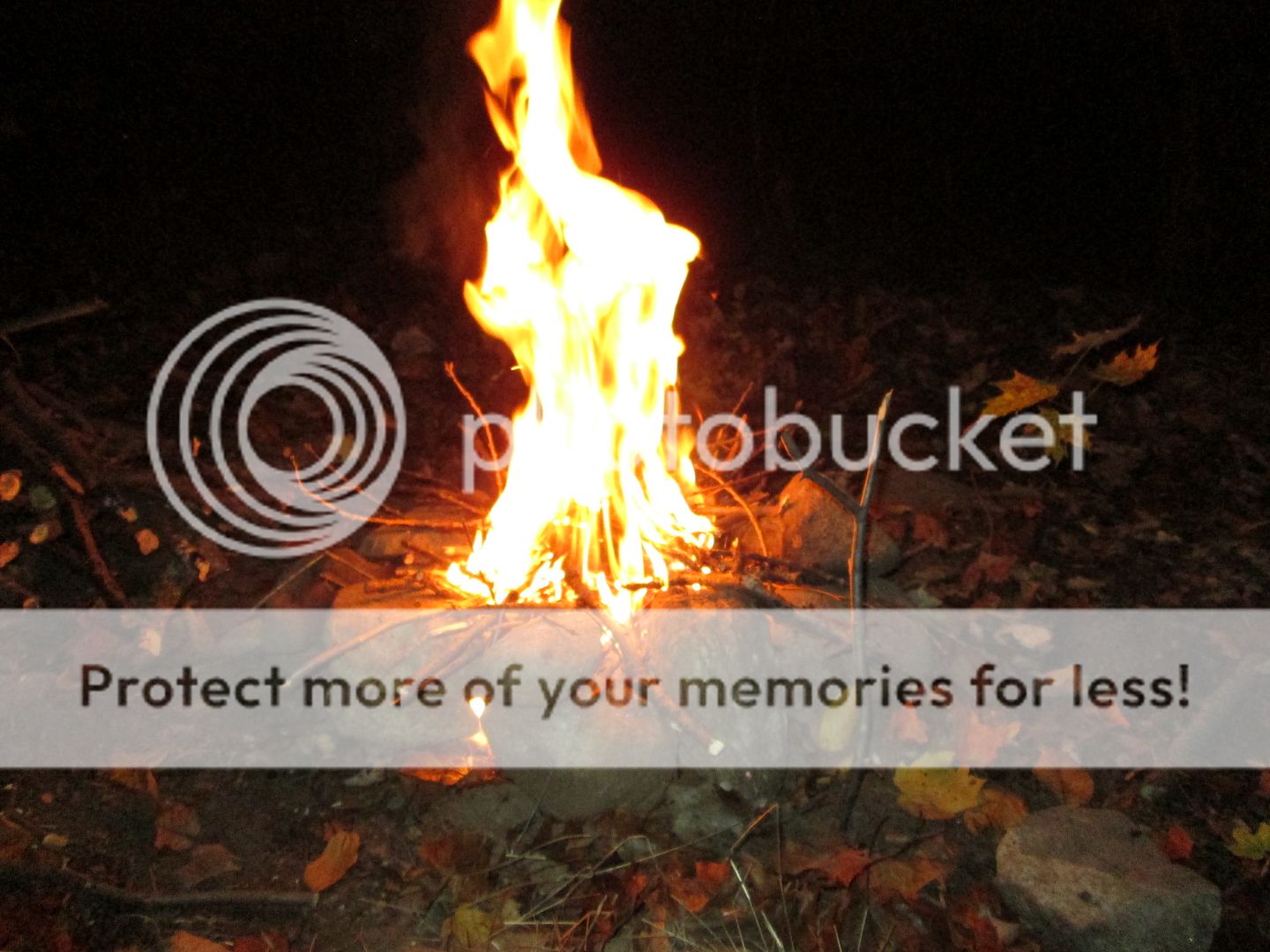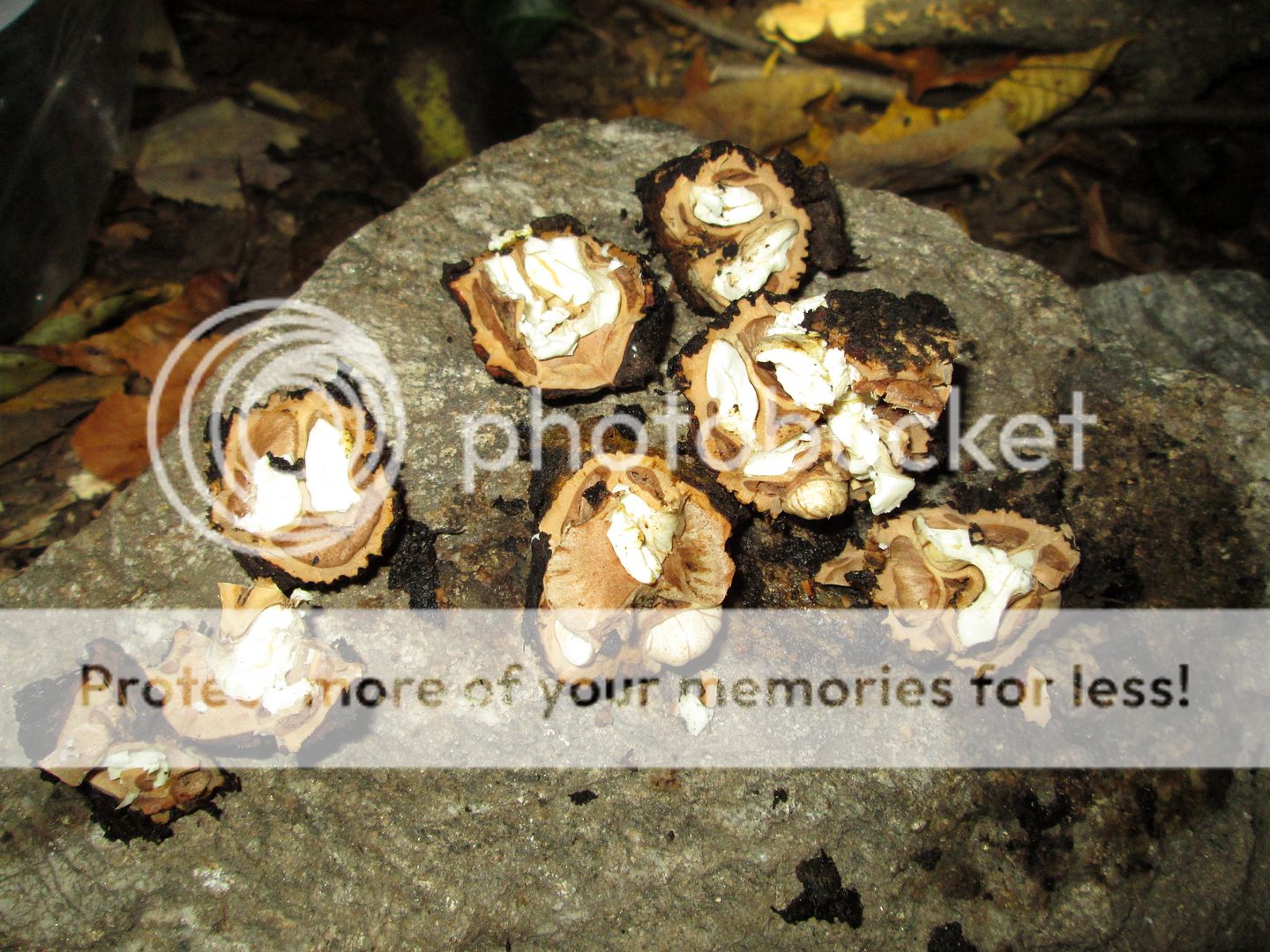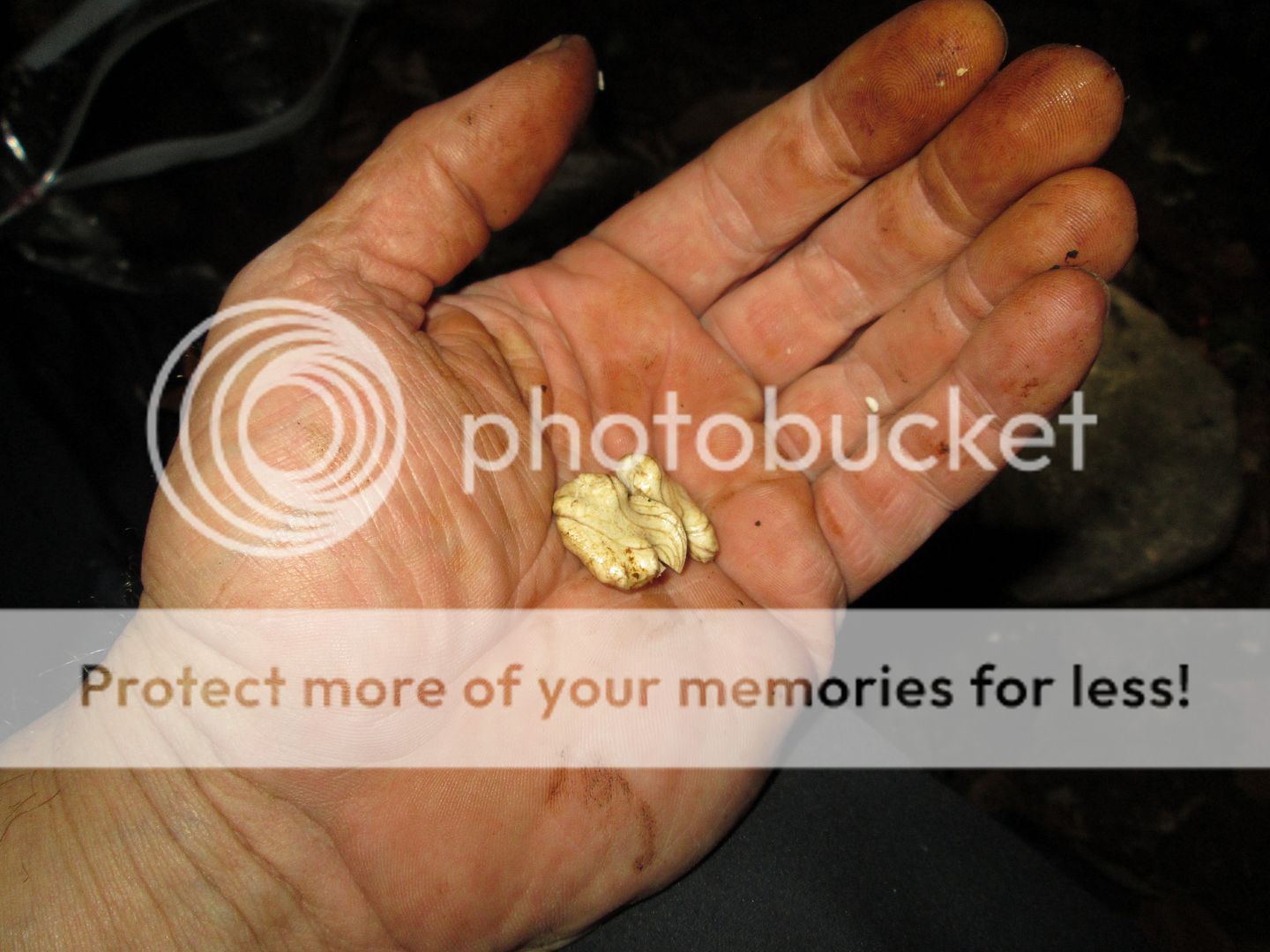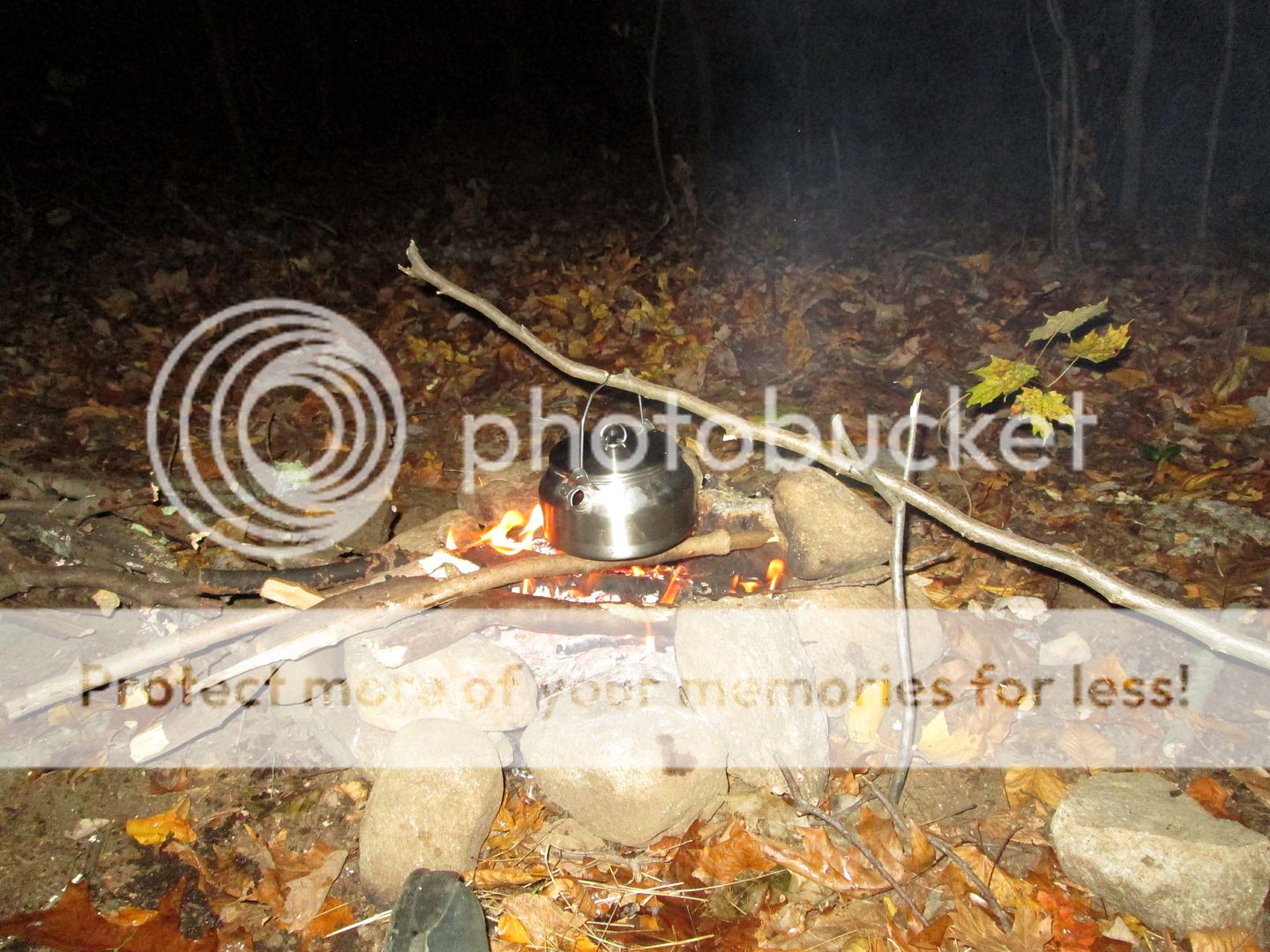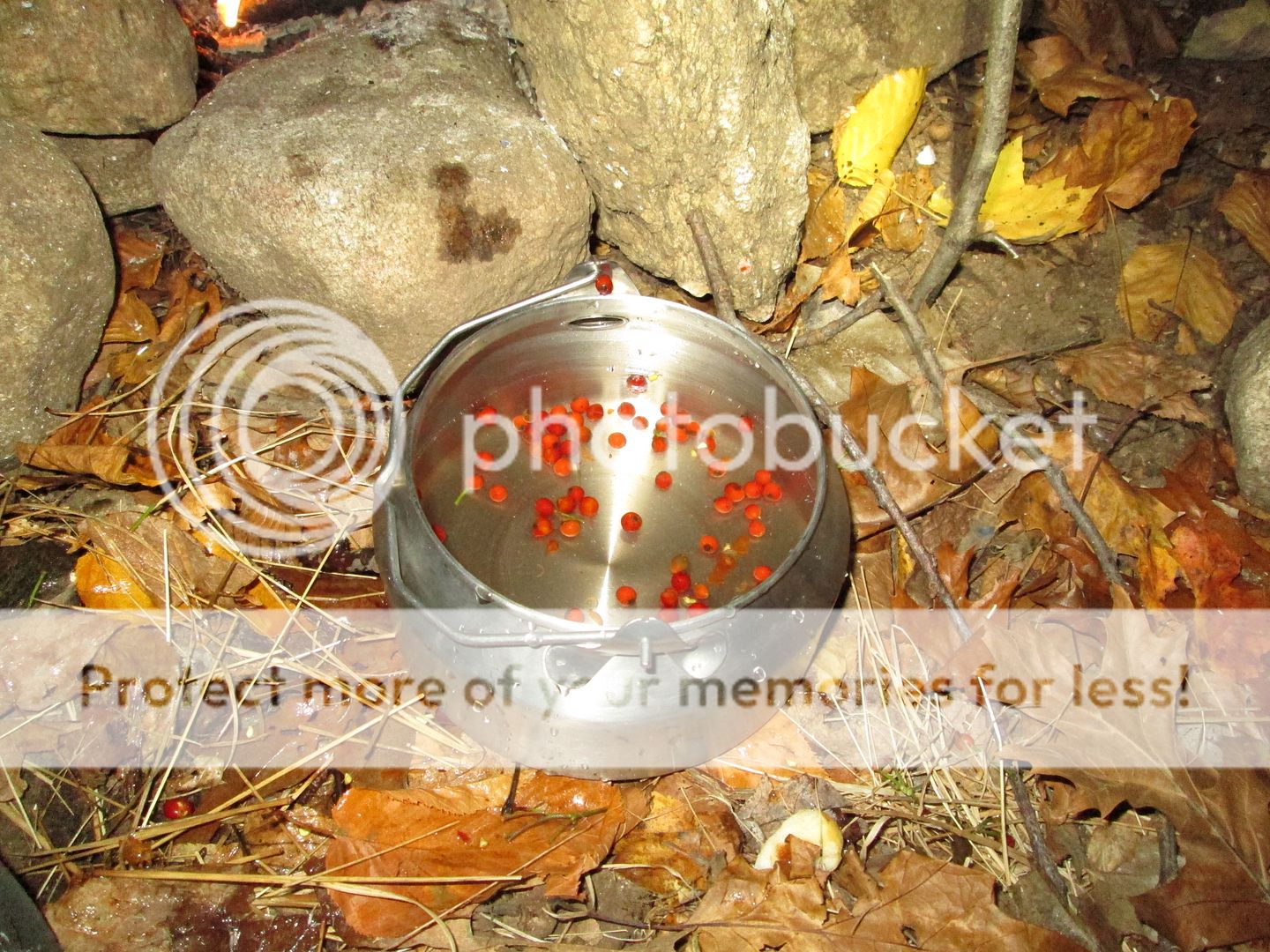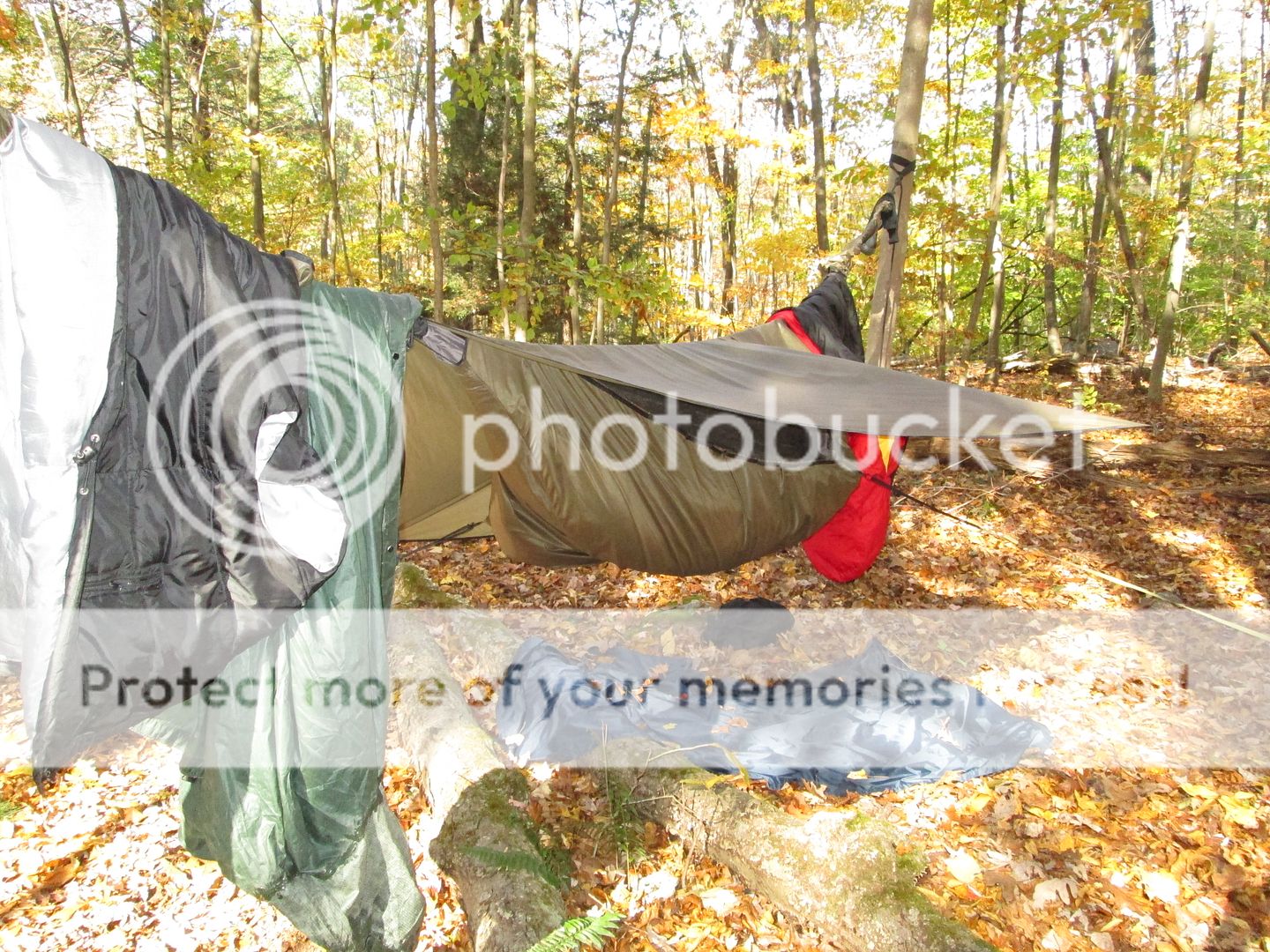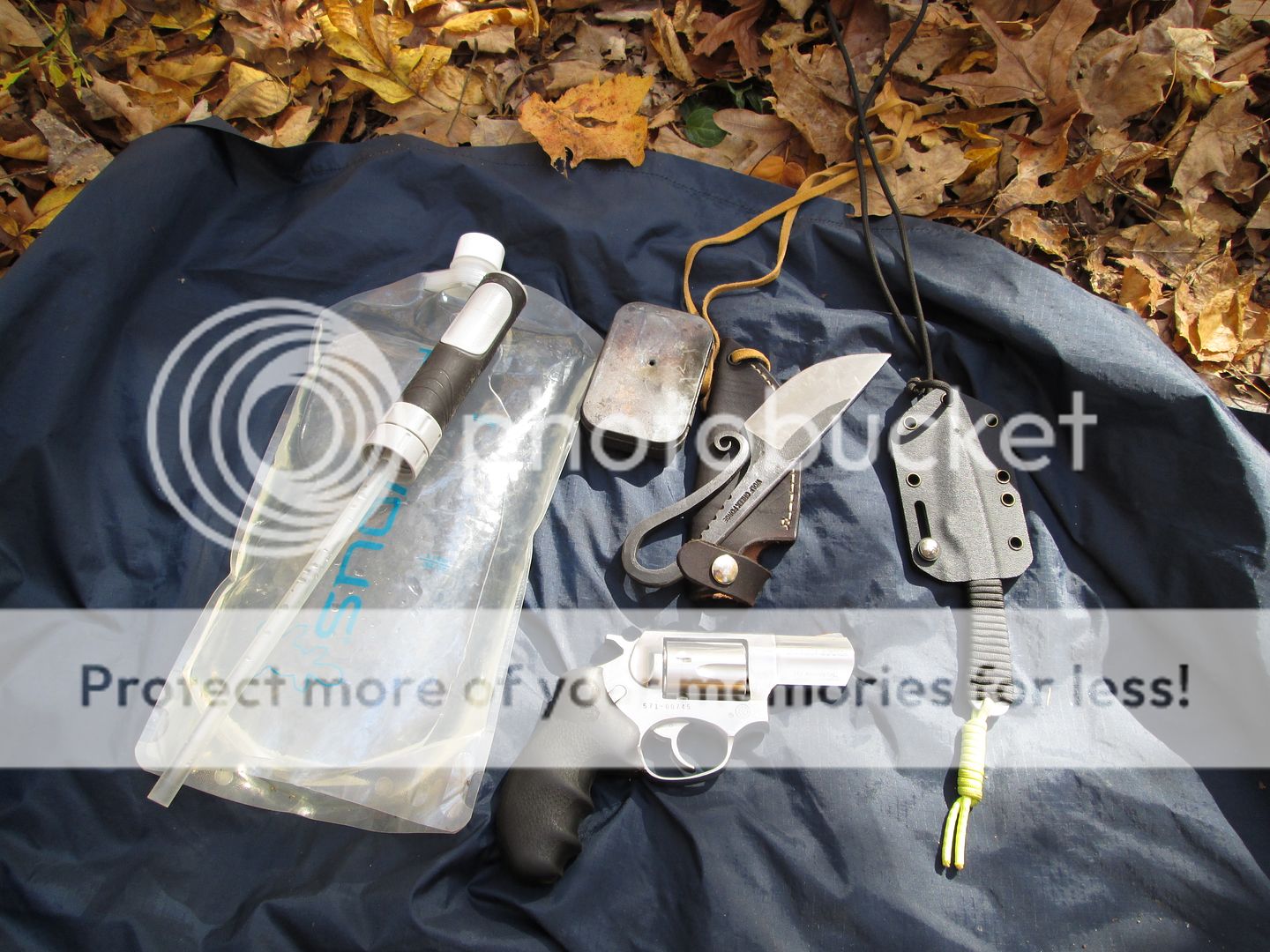- Joined
- Jun 3, 2010
- Messages
- 1,516
Part 1.
I posted this in another forum but there is some knife content in field use so maybe it will be of interest here. Before reading: Don't eat anything without knowing for sure what it is. If yea don't know, don't eat it. I am no certified expert at anything so don't take my word an edible is actually edible. Do you're own research. This was an Autumn outing with the following limitations.
1. Use marginal means to start a fire. No matches, lighters or firesteels.
2. Use marginal means to fish. Just stuff that is often packed in a BOB or PSK. No rod and reel aka hobo fishing.
3. No packed food or water.
4. No stoves or eating utensils. Would have to make a pot hook.
I would target maybe these wild edibles/fish in no particular order.
1. Hickory nuts.
2. Black Walnuts.
3. Partridge berries.
4. Wild carrots. First year growth.
5. Conifer needles. Say Eastern White pine or Hemlock.
6. Wild grapes. Could be past season.
7. Onion grass/wild scallions.
8. Wood Sorrel.
9. Rose hips.
10. Trout.
11. Panfish.
I would also have to find the materials needed for marginal firecraft. The only packed method for firestarting would be my knife, chaga and an empty Altoids tin. Backup would be a bowdrill but that would have to be made during the trip if time allowed. To increase my chances of fire the next day I would start a fire chain by charring natural materials. I would bring a shelter and sleeping bag. Kifaru EMR loaded with Hennessy hammock plus super shelter undercover and pad, GSI SS kettle, 2 empty Platy bags, 1 empty Nalgene canteen, ziploc bags, a few small knives, Frontier pro filter straw, plastic cup, extra shirt, Golite poncho, Down-V bag,headlamp, fleece jacket, ground cloth and a few other odds and ends.
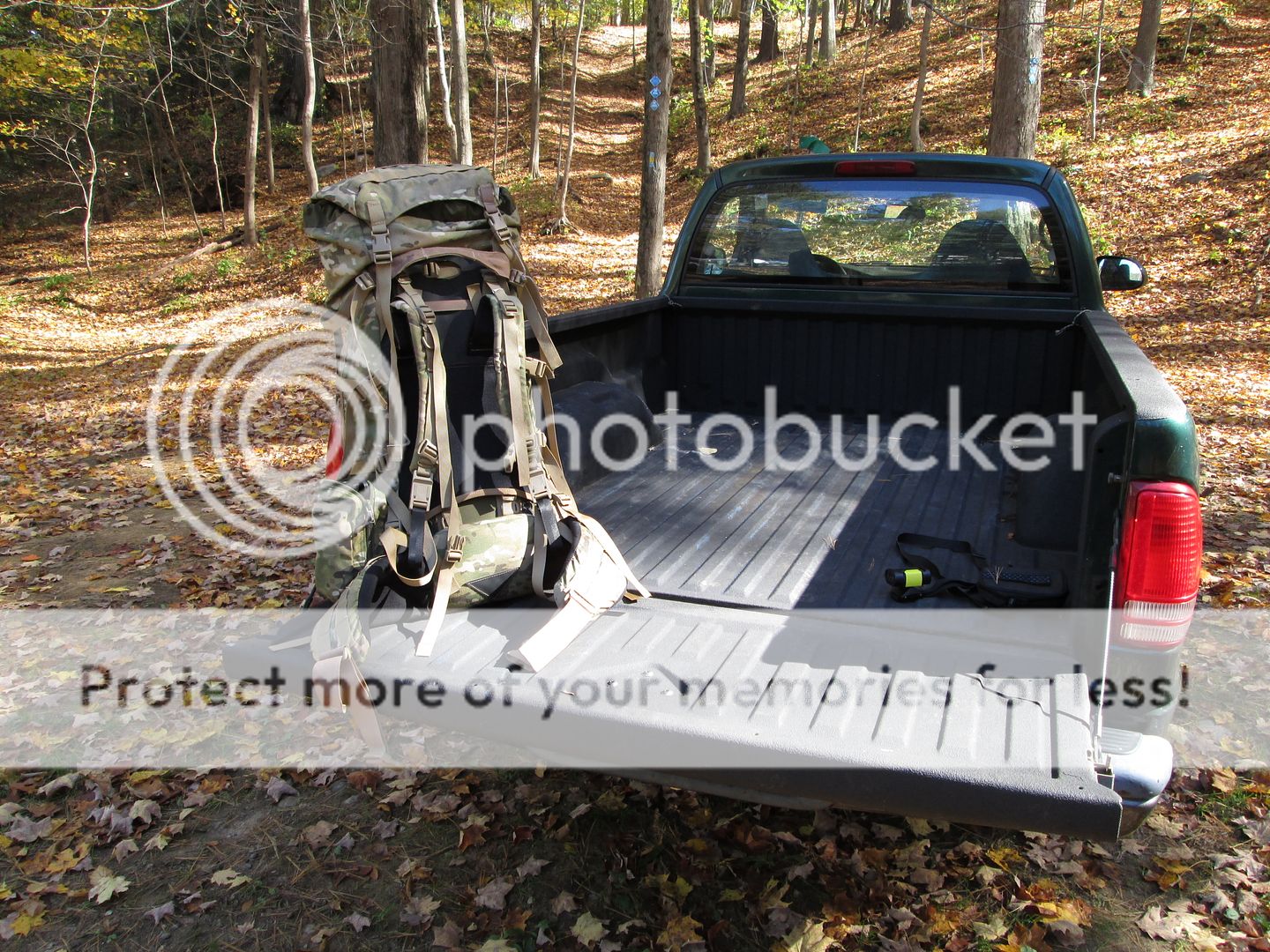
Trash found not too far from the road. Got plans for this.

I found this little brook.The water was so low felt lucky there was any. Without my filter pump had to use a cup to collect it. Looked darn good, cold and clear but would use the filter straw and boiling. I was looking for a fun outing to practice skills, not giardia.


The high voltage power lines are helped because they offer some open sky and field forage.
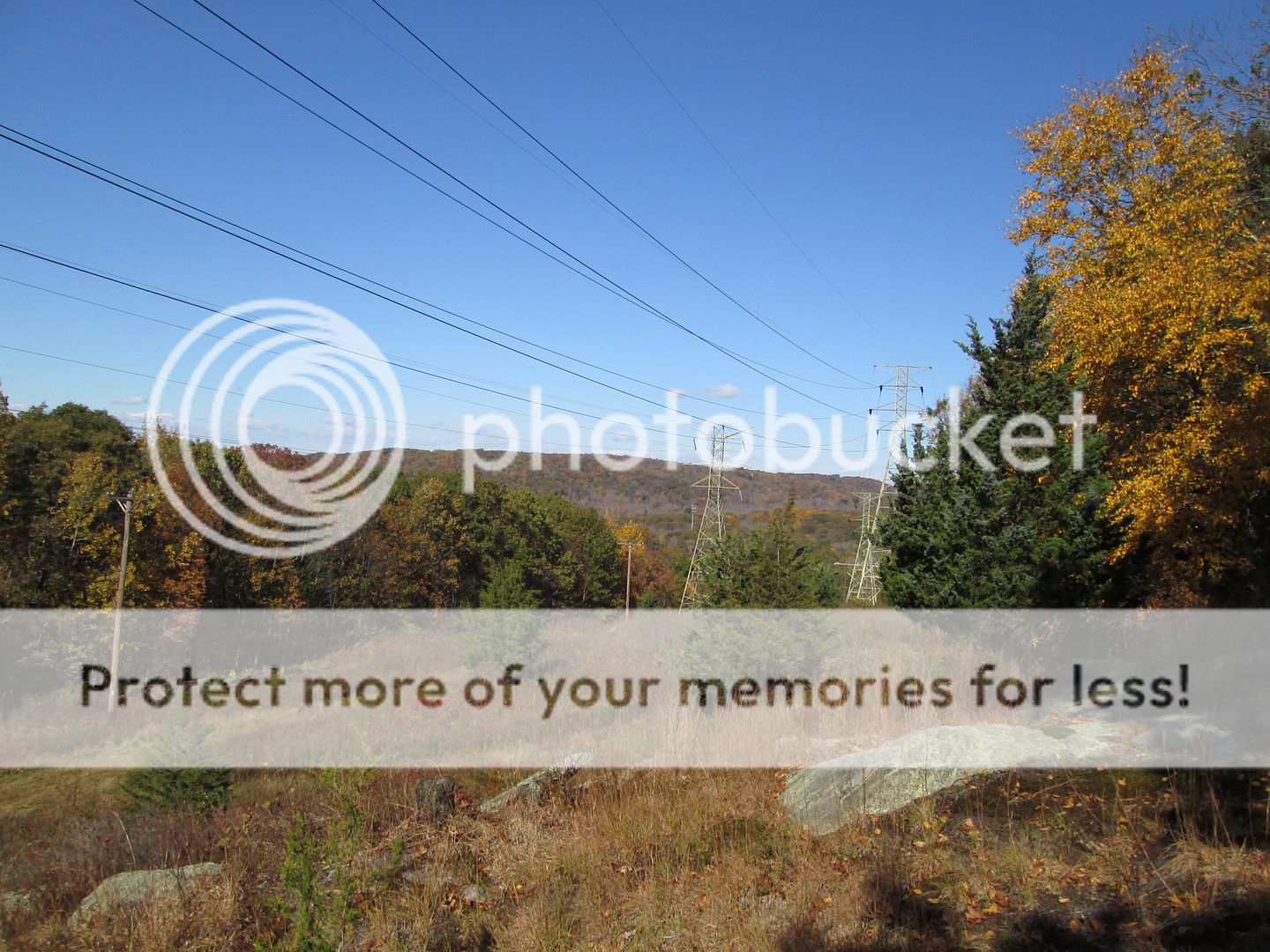
I like praying mantis.

Going to need some of this dried grass. It should work well as part of my tinder bundle.
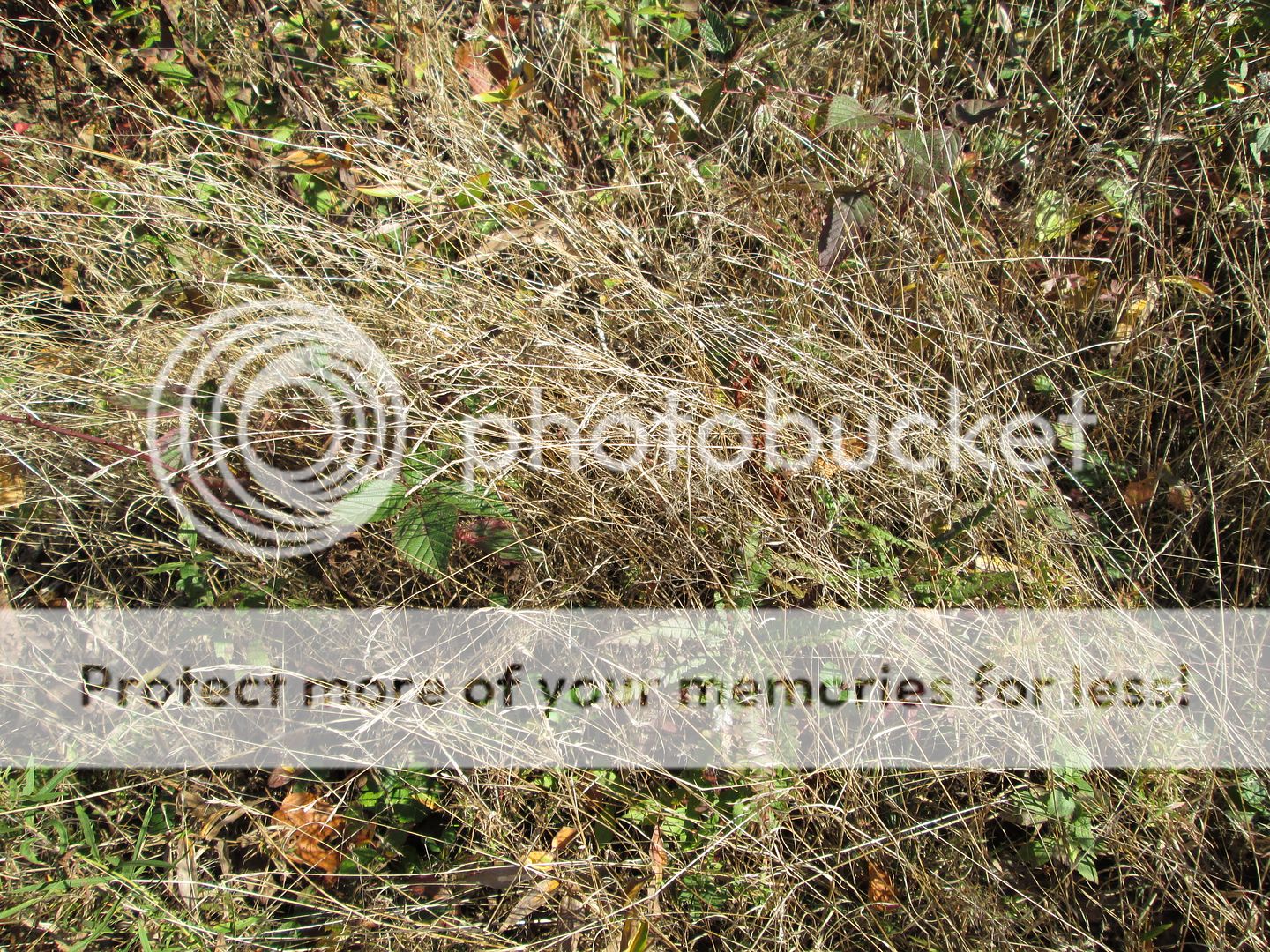
This fluffy stuff looked good so into the tinder bag it went.

Sweet fern. Not a fern at all but the leaves do bare a resemblance. There are multiple uses for this but was planning on a smug. For those not familiar with that term it would be burned as a mosquito repellent. It felt warm, maybe 65 F in the open field however the forecasted low would be in the 40's. As such I didn't expect a bug problem in camp but foraged some anyways. On a side note I am not aware of any scientific study showing this plant works as a bug repellent. Just my own observation and what others have told me.
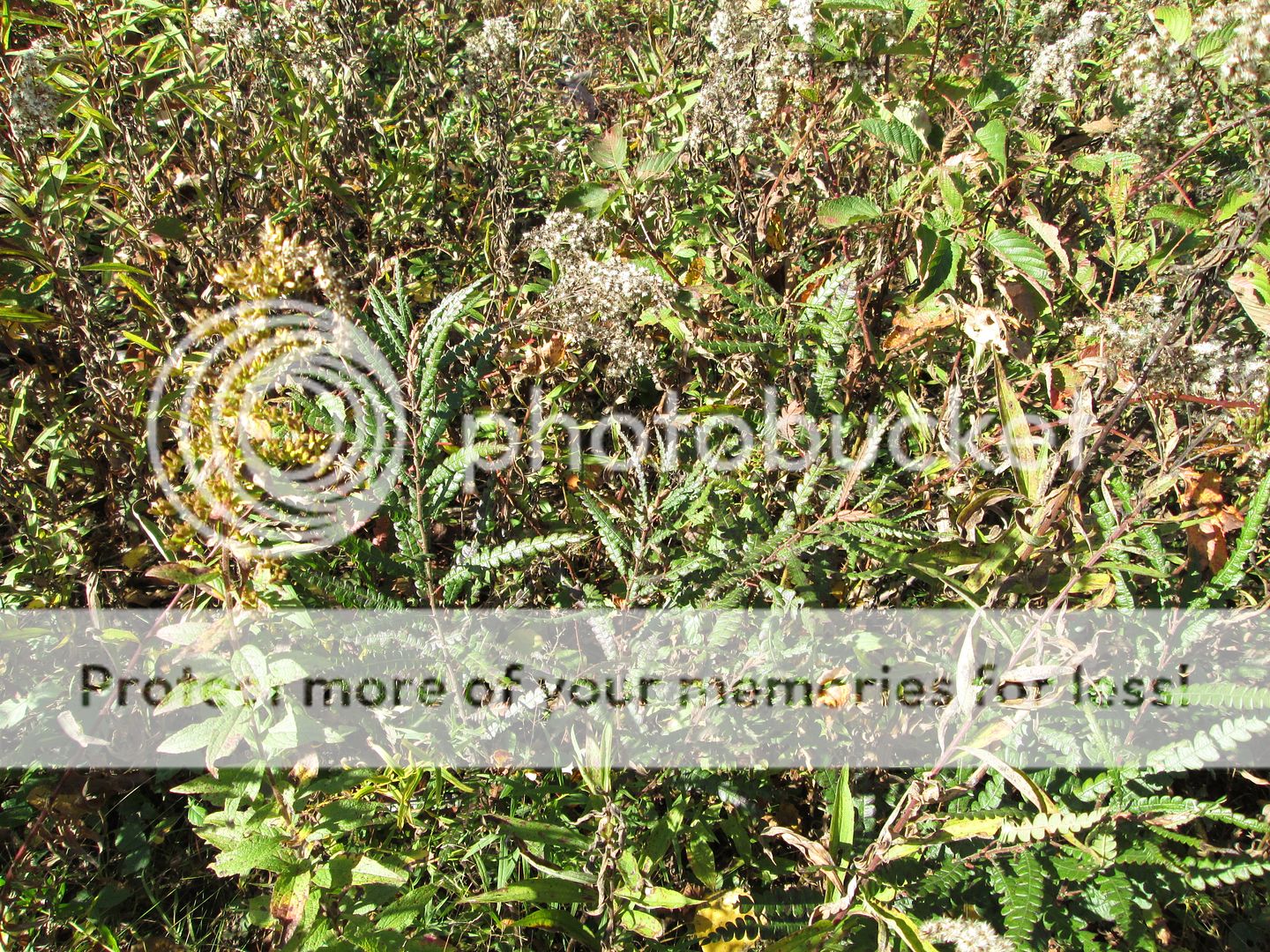
Moving along the higher ridge of the field looking for cedar.
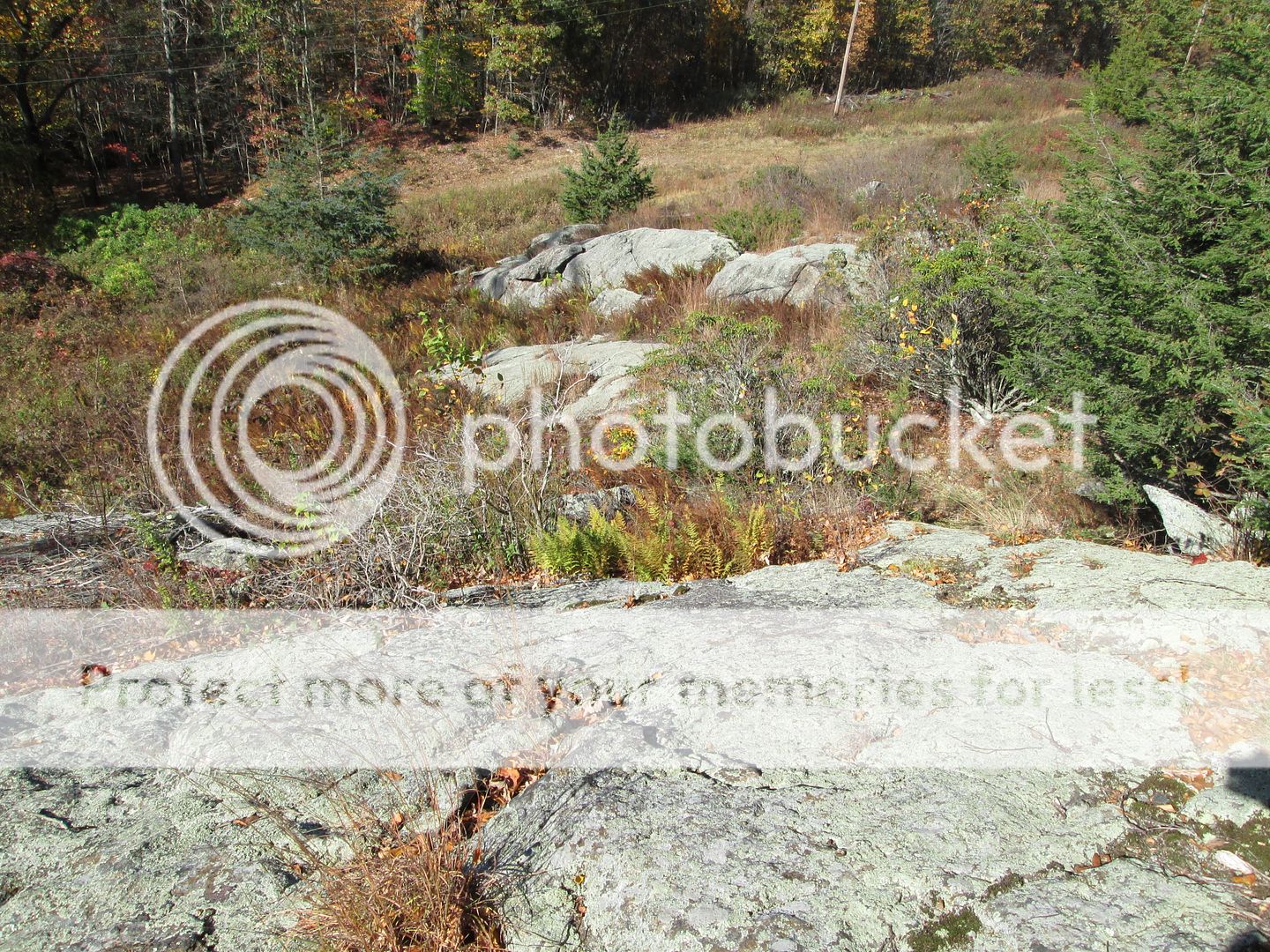
Bingo! But finding cedar trees doesn't mean there will be good, easy to gather cedar bark.

Now this is what I was looking for. Given the marginal nature of my firekit cedar bark would be a big help. My plan was for use within a tinder bundle and potential charring.
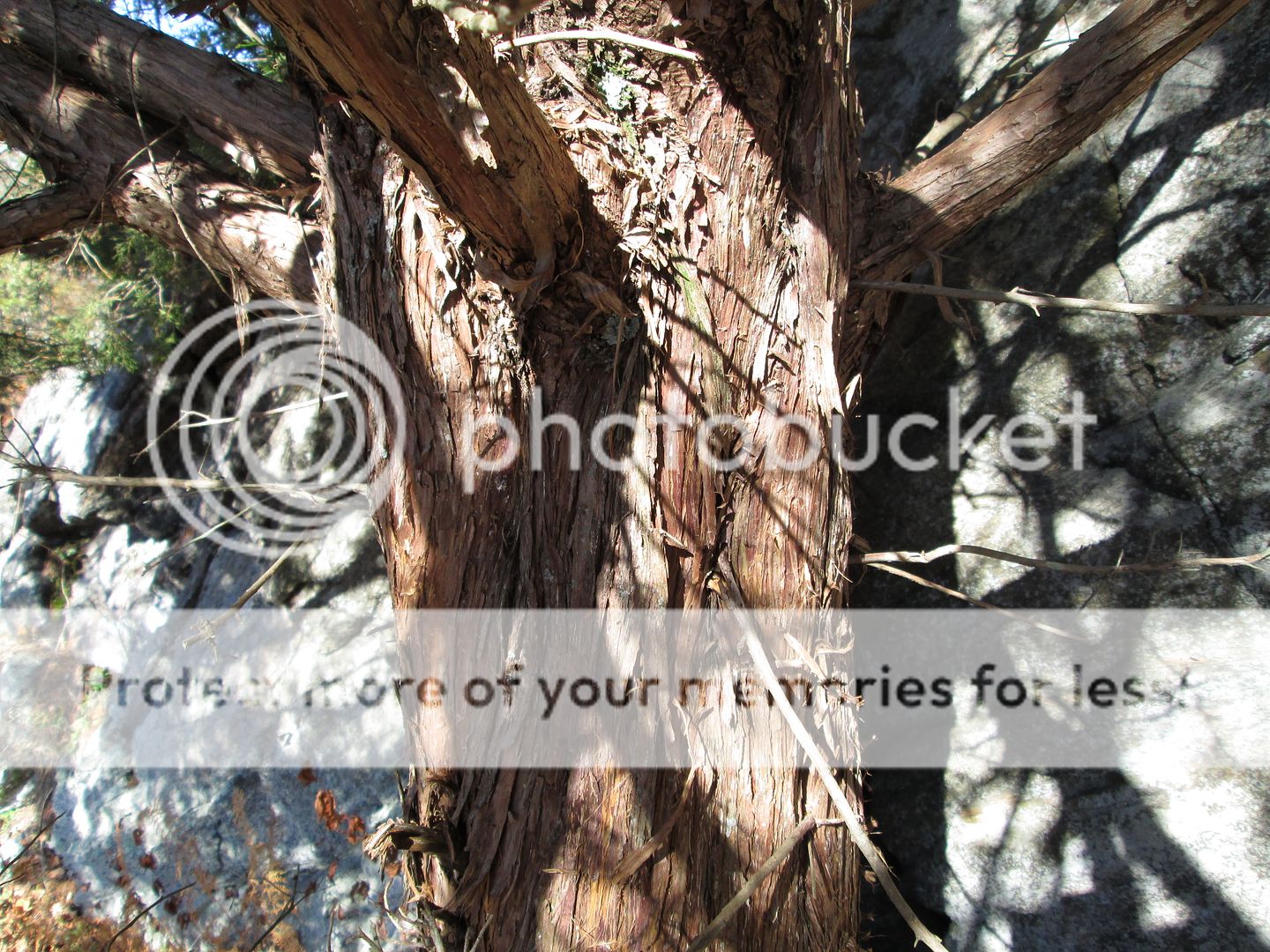
Lower I found these wild carrots. Not much but it was a start. Remember, a carrot MUST smell like one. Wild carrots are biennial plants. The second year of grow is the Queen Anne's lace stage. They're called Queen's Ann's lace based on the flower. At that stage the root becomes too woody for me. Some think there is a resemblance to water hemlock which is deadly poisonous. If there is even a hint of doubt my advice is to not eat it. As stated that's standard advice for all wild edibles.

Along the way I found many rose hips. It was a very good year for them. I intended to use these for tea.

Speaking of rose hips a relative, the apple also had a great year. Found these naturalized apples. Apples aren't native to my state but can be found growing wild. There were some holes and funky black stuff on the skin but things were starting to look promising.
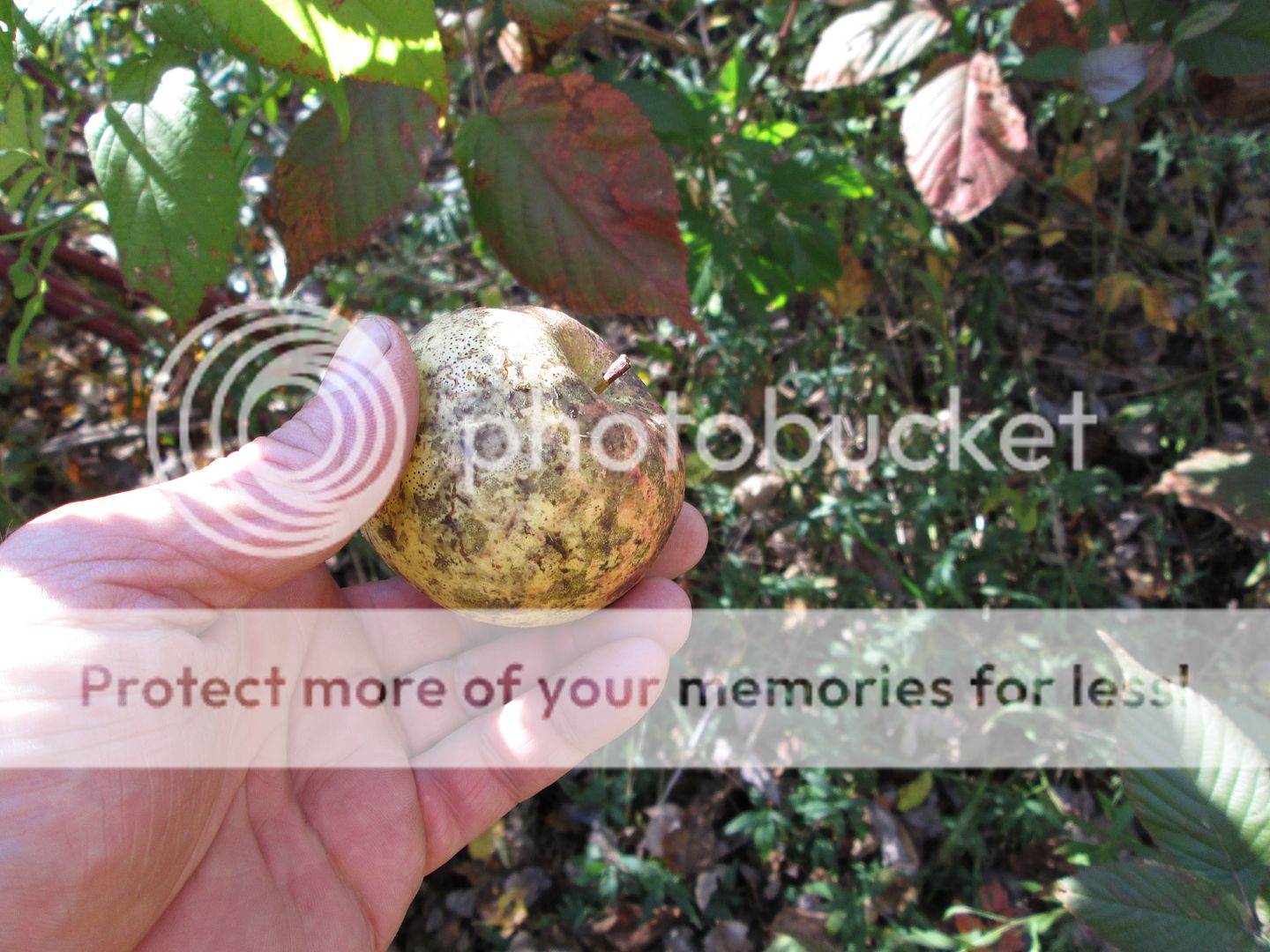
The jackpot. Wild Black walnuts. It seems they're also having a very good year. The leaves turn yellow in Autumn with around 8 or so on each side of the stem. The walnut's husk starts out green but then turns black as they ripen. Mega calories for sure. Foraged a good number.

A bit into a forested area found this wood sorrel. Was going to pack it but just nibbled it away.

Tons of hickory nuts. These are another high source of calories that wouldn't be overlooked. One of the few sources of fat in the woods that doesn't run, fly or swim away. Like the Black walnuts the outer husk turns black as they ripen but hickory nut husks are sectioned, falling away much easier.
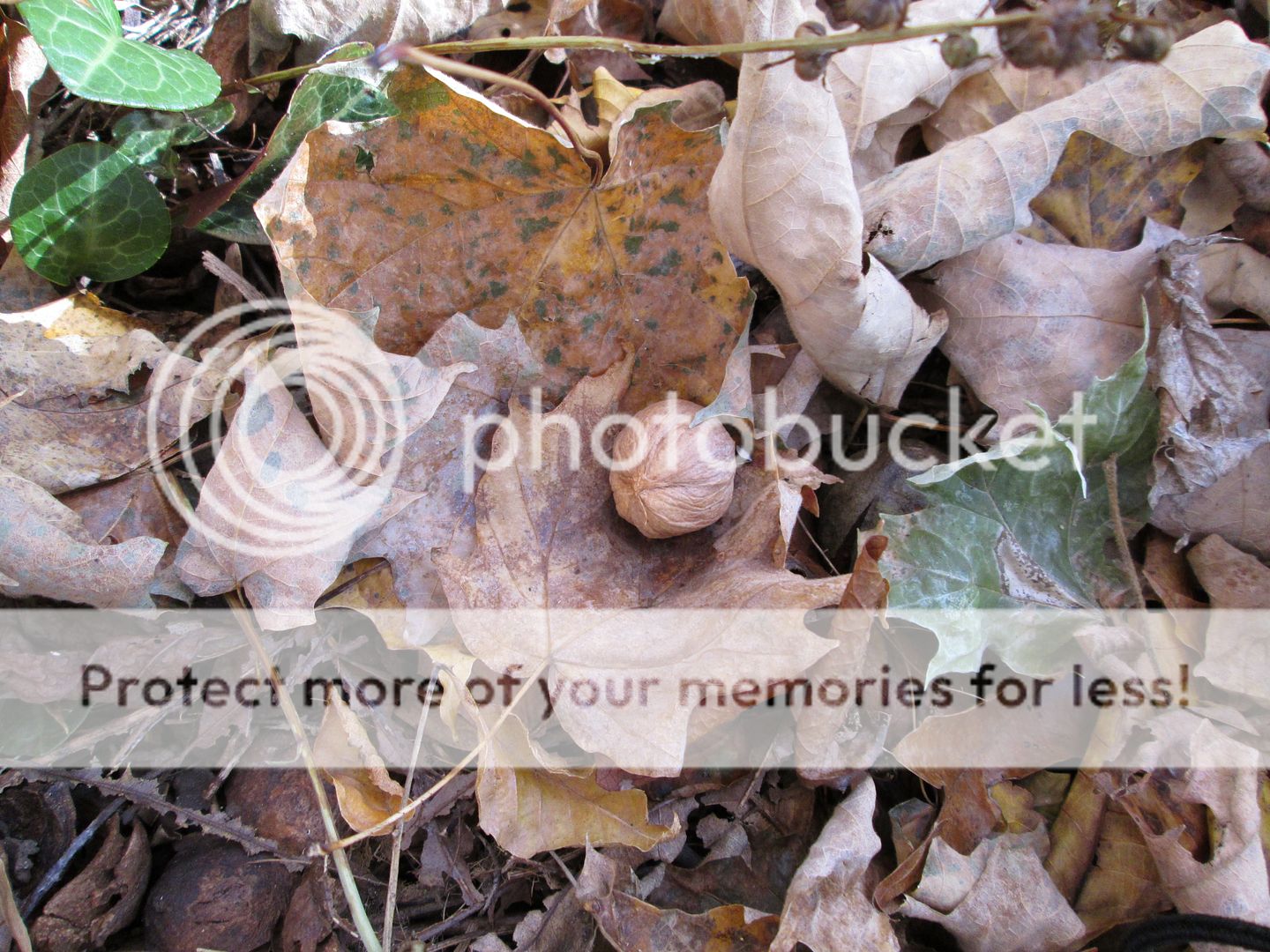
Getting closer to the river it was time to make the hobo fishing rig. Just a hand caster which I hoped would reward me with a big trout. Looks great but will it preform?

Getting very near the river found some Yellow birch. They seem to like being near water but can find them growing away from it as well. The bark would be used within the tinder bundle to give the fledgling flames a massive kick start setting the kindling ablaze. More could be mixed in with the kindling if conditions warrant. I gathered some without injury to the tree.
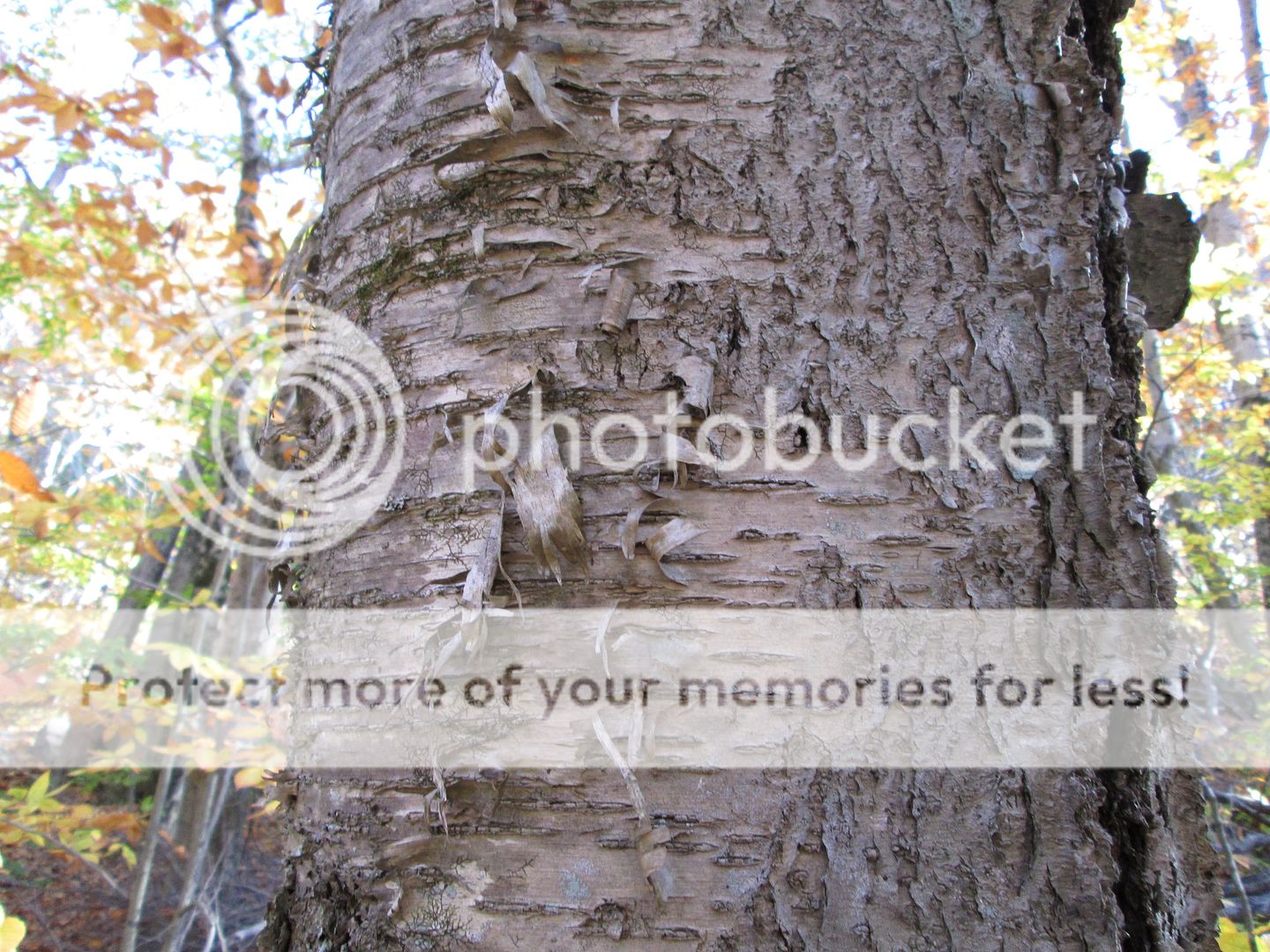
Darn it! The water was so low, not a good sign. The odds were stacked against me with only an hour or so left before dusk set within the bottom of the valley. I caught nothing beyond a few snags and disappointment. This was a downer given hiking to the bottom then back again sucked up time and effort. I hate setting up camp in the dark and that is exactly what was going to happen.

At least there was some quartz for a striker. I employed a very complex knapping method known as drop big rock on smaller rock. Bushcraft at this level has taken years of study. I have never gotten over the fear of a chip flying into my eye. LOL!
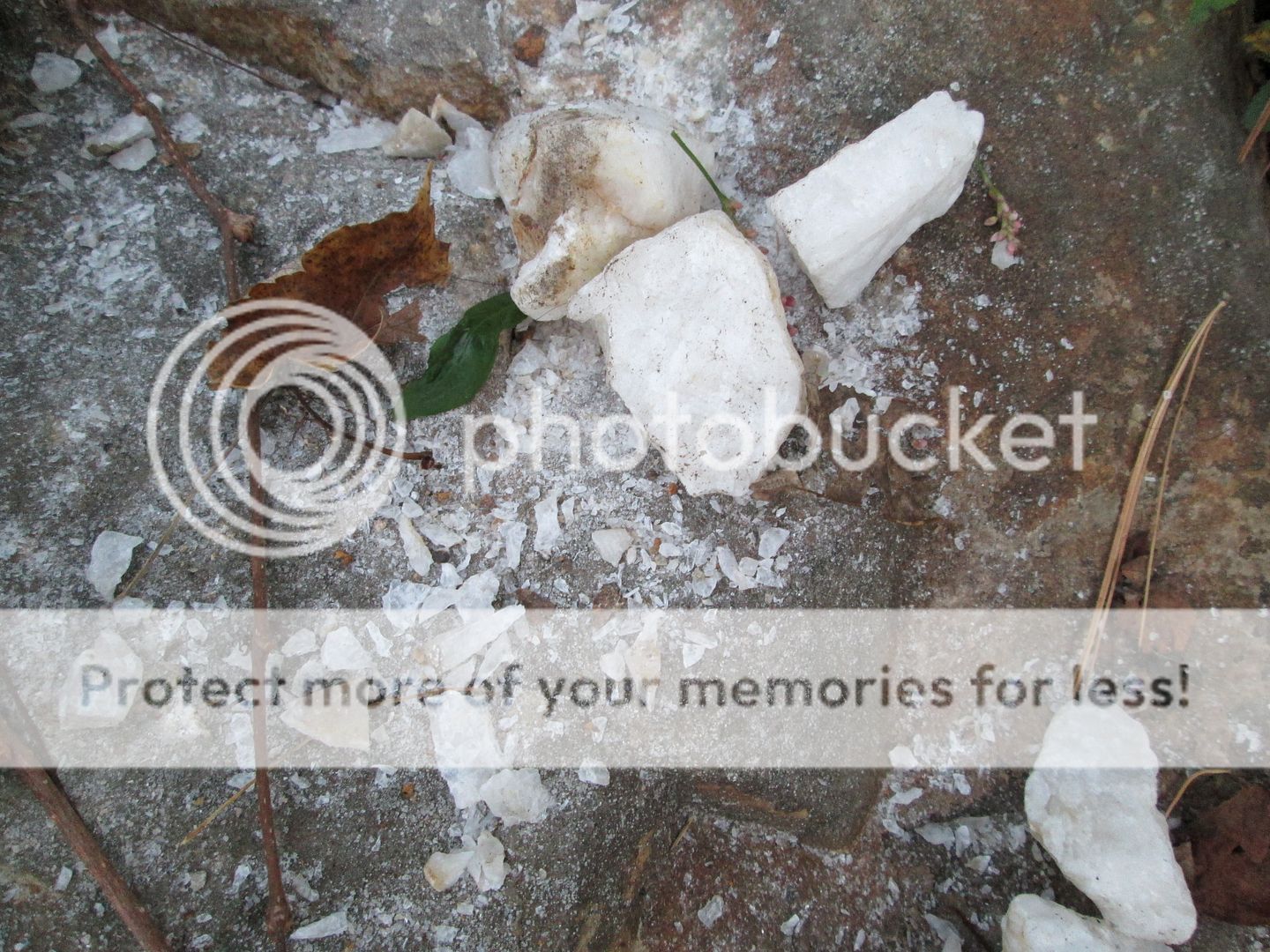
The usual 3-part pile of firewood. Nothing split, feather sticked or fancied up. There are times when those skills are needed but this wasn't one of them. The fire ring was small therefore shouldn't burn all that much. Upon retrospect maybe gathering more would have been better because a few hours later I had to do it anyways. I really just wanted to get the marginal firekit monkey off my back. In the past I had marginal means of starting a fire work just fine during the day only to fail during the night as temps and conditions changed. So is it better to gather enough wood to ensure a fire will start then persist but not enough for the night if temps and conditions are becoming less favorable for starting it? Or do we make sure there is enough wood to burn all night then try to get it started as the temps and conditions becomes less favorable? No sure but went with the first option.

My no fuss pot hook. Again nothing fancy.

As expected setup the hammock camp in the dark.
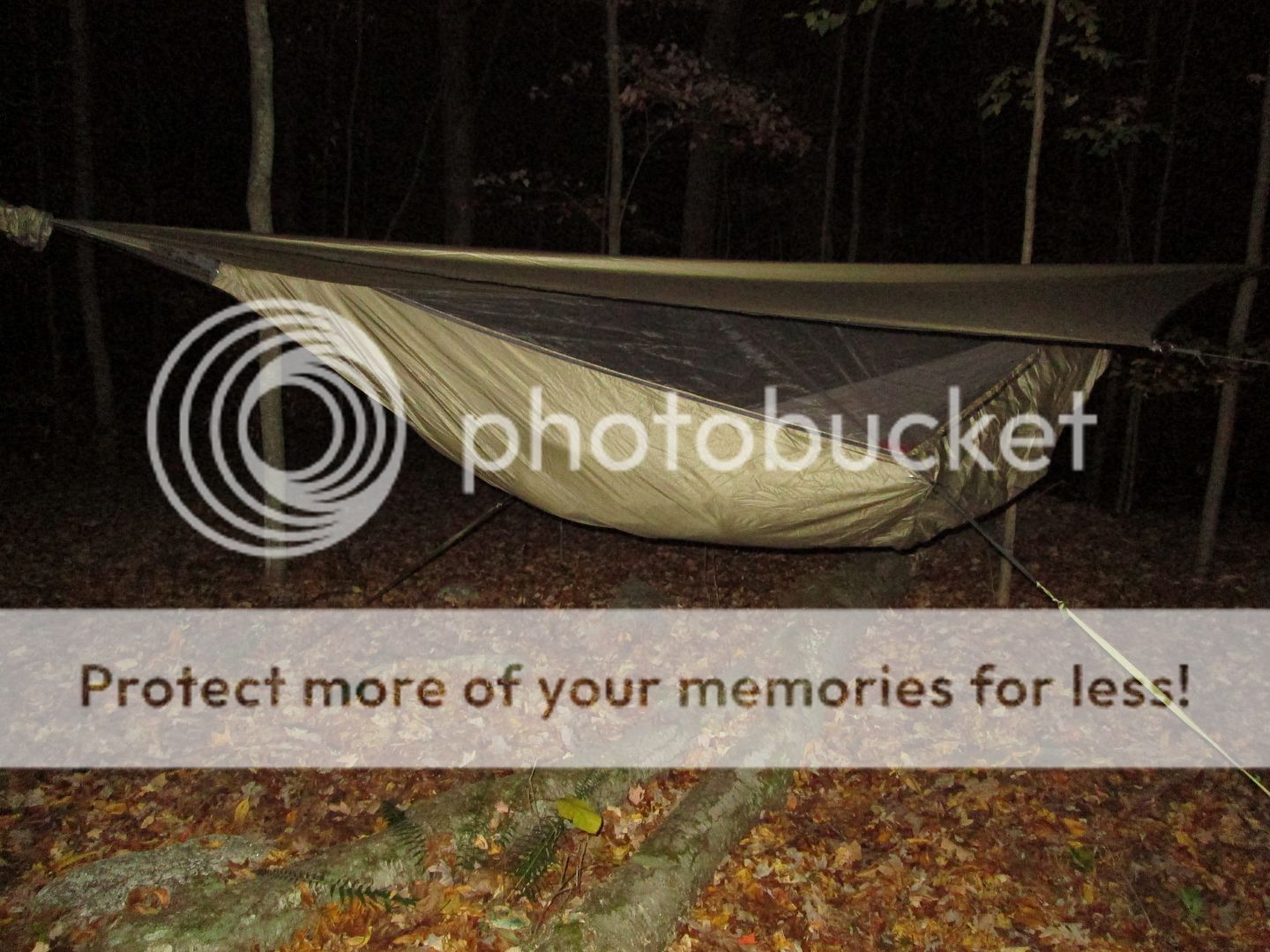
So let's take a look at what the day's gathering/foraging netted. Not bad. I drank the Nalgene canteen during the day but still had two 70 ounce Platys filled. There was water, food, and stuff for fire. There were also some failures. I didn't catch a trout or any other fish. I didn't find any grapes beyond some hopelessly shriveled up ones. I didn't find any wild scallions despite being sure some would turn up. Partridge berries were MIA, found the plants but not the berries. No great loss there. The conifer needles simply slipped my mind. Again no great loss. When it comes to foraging things can be hit or miss. I have done outings like this before making the mistake of waiting to gather water. I can go a looong time without food but running around without water makes me droop like a plant. Making that a priority put a good spin on everything this time.

With the firewood collected it was time to start the fire. When practicing skills I have gotten a coal many times with chaga but only used this method to start a campfire maybe 15 times. Clearly too few for any claim of expertise on the topic. Frankly I was a bit worried about failure which has happened before. Normally not a big deal because I pack multiple modern firestarting methods however not this time. On the plus side the chaga was fire grade. The large chuck has taken a coal using flint and steel before. But that doesn't mean it will the next time.
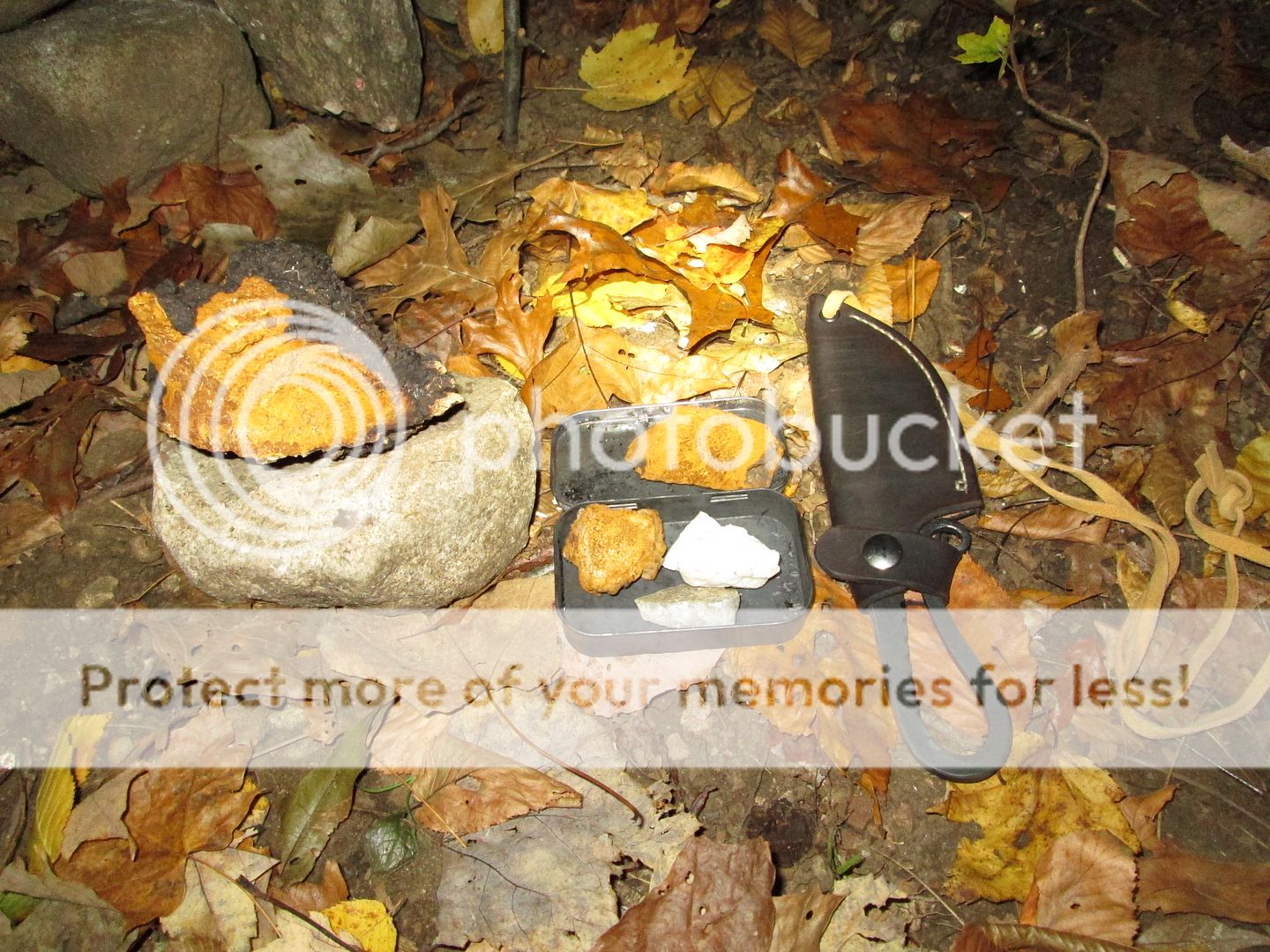
I posted this in another forum but there is some knife content in field use so maybe it will be of interest here. Before reading: Don't eat anything without knowing for sure what it is. If yea don't know, don't eat it. I am no certified expert at anything so don't take my word an edible is actually edible. Do you're own research. This was an Autumn outing with the following limitations.
1. Use marginal means to start a fire. No matches, lighters or firesteels.
2. Use marginal means to fish. Just stuff that is often packed in a BOB or PSK. No rod and reel aka hobo fishing.
3. No packed food or water.
4. No stoves or eating utensils. Would have to make a pot hook.
I would target maybe these wild edibles/fish in no particular order.
1. Hickory nuts.
2. Black Walnuts.
3. Partridge berries.
4. Wild carrots. First year growth.
5. Conifer needles. Say Eastern White pine or Hemlock.
6. Wild grapes. Could be past season.
7. Onion grass/wild scallions.
8. Wood Sorrel.
9. Rose hips.
10. Trout.
11. Panfish.
I would also have to find the materials needed for marginal firecraft. The only packed method for firestarting would be my knife, chaga and an empty Altoids tin. Backup would be a bowdrill but that would have to be made during the trip if time allowed. To increase my chances of fire the next day I would start a fire chain by charring natural materials. I would bring a shelter and sleeping bag. Kifaru EMR loaded with Hennessy hammock plus super shelter undercover and pad, GSI SS kettle, 2 empty Platy bags, 1 empty Nalgene canteen, ziploc bags, a few small knives, Frontier pro filter straw, plastic cup, extra shirt, Golite poncho, Down-V bag,headlamp, fleece jacket, ground cloth and a few other odds and ends.

Trash found not too far from the road. Got plans for this.

I found this little brook.The water was so low felt lucky there was any. Without my filter pump had to use a cup to collect it. Looked darn good, cold and clear but would use the filter straw and boiling. I was looking for a fun outing to practice skills, not giardia.


The high voltage power lines are helped because they offer some open sky and field forage.

I like praying mantis.

Going to need some of this dried grass. It should work well as part of my tinder bundle.

This fluffy stuff looked good so into the tinder bag it went.

Sweet fern. Not a fern at all but the leaves do bare a resemblance. There are multiple uses for this but was planning on a smug. For those not familiar with that term it would be burned as a mosquito repellent. It felt warm, maybe 65 F in the open field however the forecasted low would be in the 40's. As such I didn't expect a bug problem in camp but foraged some anyways. On a side note I am not aware of any scientific study showing this plant works as a bug repellent. Just my own observation and what others have told me.

Moving along the higher ridge of the field looking for cedar.

Bingo! But finding cedar trees doesn't mean there will be good, easy to gather cedar bark.

Now this is what I was looking for. Given the marginal nature of my firekit cedar bark would be a big help. My plan was for use within a tinder bundle and potential charring.

Lower I found these wild carrots. Not much but it was a start. Remember, a carrot MUST smell like one. Wild carrots are biennial plants. The second year of grow is the Queen Anne's lace stage. They're called Queen's Ann's lace based on the flower. At that stage the root becomes too woody for me. Some think there is a resemblance to water hemlock which is deadly poisonous. If there is even a hint of doubt my advice is to not eat it. As stated that's standard advice for all wild edibles.

Along the way I found many rose hips. It was a very good year for them. I intended to use these for tea.

Speaking of rose hips a relative, the apple also had a great year. Found these naturalized apples. Apples aren't native to my state but can be found growing wild. There were some holes and funky black stuff on the skin but things were starting to look promising.

The jackpot. Wild Black walnuts. It seems they're also having a very good year. The leaves turn yellow in Autumn with around 8 or so on each side of the stem. The walnut's husk starts out green but then turns black as they ripen. Mega calories for sure. Foraged a good number.

A bit into a forested area found this wood sorrel. Was going to pack it but just nibbled it away.

Tons of hickory nuts. These are another high source of calories that wouldn't be overlooked. One of the few sources of fat in the woods that doesn't run, fly or swim away. Like the Black walnuts the outer husk turns black as they ripen but hickory nut husks are sectioned, falling away much easier.

Getting closer to the river it was time to make the hobo fishing rig. Just a hand caster which I hoped would reward me with a big trout. Looks great but will it preform?

Getting very near the river found some Yellow birch. They seem to like being near water but can find them growing away from it as well. The bark would be used within the tinder bundle to give the fledgling flames a massive kick start setting the kindling ablaze. More could be mixed in with the kindling if conditions warrant. I gathered some without injury to the tree.

Darn it! The water was so low, not a good sign. The odds were stacked against me with only an hour or so left before dusk set within the bottom of the valley. I caught nothing beyond a few snags and disappointment. This was a downer given hiking to the bottom then back again sucked up time and effort. I hate setting up camp in the dark and that is exactly what was going to happen.

At least there was some quartz for a striker. I employed a very complex knapping method known as drop big rock on smaller rock. Bushcraft at this level has taken years of study. I have never gotten over the fear of a chip flying into my eye. LOL!

The usual 3-part pile of firewood. Nothing split, feather sticked or fancied up. There are times when those skills are needed but this wasn't one of them. The fire ring was small therefore shouldn't burn all that much. Upon retrospect maybe gathering more would have been better because a few hours later I had to do it anyways. I really just wanted to get the marginal firekit monkey off my back. In the past I had marginal means of starting a fire work just fine during the day only to fail during the night as temps and conditions changed. So is it better to gather enough wood to ensure a fire will start then persist but not enough for the night if temps and conditions are becoming less favorable for starting it? Or do we make sure there is enough wood to burn all night then try to get it started as the temps and conditions becomes less favorable? No sure but went with the first option.

My no fuss pot hook. Again nothing fancy.

As expected setup the hammock camp in the dark.

So let's take a look at what the day's gathering/foraging netted. Not bad. I drank the Nalgene canteen during the day but still had two 70 ounce Platys filled. There was water, food, and stuff for fire. There were also some failures. I didn't catch a trout or any other fish. I didn't find any grapes beyond some hopelessly shriveled up ones. I didn't find any wild scallions despite being sure some would turn up. Partridge berries were MIA, found the plants but not the berries. No great loss there. The conifer needles simply slipped my mind. Again no great loss. When it comes to foraging things can be hit or miss. I have done outings like this before making the mistake of waiting to gather water. I can go a looong time without food but running around without water makes me droop like a plant. Making that a priority put a good spin on everything this time.

With the firewood collected it was time to start the fire. When practicing skills I have gotten a coal many times with chaga but only used this method to start a campfire maybe 15 times. Clearly too few for any claim of expertise on the topic. Frankly I was a bit worried about failure which has happened before. Normally not a big deal because I pack multiple modern firestarting methods however not this time. On the plus side the chaga was fire grade. The large chuck has taken a coal using flint and steel before. But that doesn't mean it will the next time.

Last edited:

